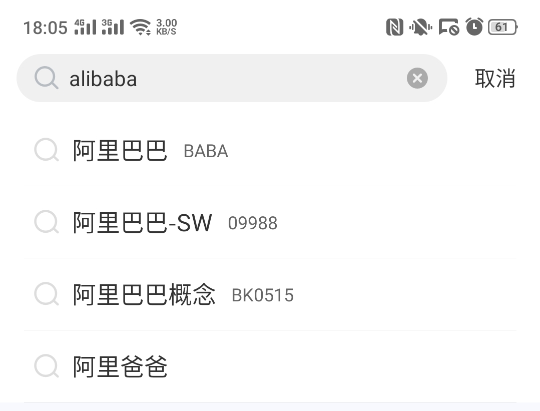参数化是自动化测试的一种常用技巧,可以将测试代码中的某些输入使用参数来代替。以百度搜索功能为例,每次测试搜索场景,都需要测试不同的搜索内容,在这个过程里面,除了数据在变化,测试步骤都是重复的,这时就可以使用参数化的方式来解决测试数据变化,测试步骤不变的问题。
参数化就是把测试需要用到的参数写到数据集合里,让程序自动去这个集合里面取值,每条数据都生成一条对应的测试用例,直到集合里的值全部取完。
使用方法
使用 Appium 测试框架编写测试用例时,通常会结合 pytest 测试框架一起使用。使用 pytest 的参数化机制,可以减少代码重复,在测试代码前添加装饰器 @pytest.mark.parametrize,来完成数据的传输。示例代码如下:
@pytest.mark.parametrize("argvnames",argvalues)
复制代码
@pytest.mark.parametrize() 需要传入两个参数 “argnamest” 与 “argvalues”,第一个参数需要一个或者多个变量来接收列表中的每组数据,第二个参数传递存储数据的列表。测试用例需要使用同名的字符串接收测试数据(与“argvnames”里面的名字一致),且列表有多少个元素就会生成并执行多个测试用例。下面示例使用使用参数化定义三组数据,每组数据都存放在一个元组中,分别将元组中的数据传入(test_input,expected)参数中,示例代码如下:
# content of test_expectation.pyimport pytest
@pytest.mark.parametrize("test_input,expected", [("3+5", 8), ("2+4", 6), ("6*9", 42)])def test_eval(test_input, expected): assert eval(test_input) == expected
复制代码
运行结果如下:
...test_expectation.py ..F
test_input = '6*9', expected = 42
@pytest.mark.parametrize("test_input,expected", [("3+5", 8), ("2+4", 6), ("6*9", 42)])
def test_eval(test_input, expected):> assert eval(test_input) == expectedE AssertionError: assert 54 == 42E + where 54 = eval('6*9')
test_expectation.py:6: AssertionError
复制代码
上面的运行结果可以看出,执行的三条测试用例分别对应三组数据,测试步骤完全相同,只是传入的测试数据发生了变化。
案例
使用“雪球”应用,打开雪球 APP,点击页面上的搜索输入框输入“alibaba”,然后在搜索联想出来的列表里面点击“阿里巴巴”,选择股票分类,获取股票类型为“BABA”的股票价格,最后验证价格在预期价格的 10%范围浮动,另一个搜索“小米”的结果数据测试步骤类似。这个案例使用了参数化机制和 Hamcrest 断言机制,示例代码片断如下:
参数化示例代码:
from appium import webdriverimport pytestfrom hamcrest import *
class TestXueqiu: 省略... # 参数化 @pytest.mark.parametrize("keyword, stock_type, expect_price", [ ('alibaba', 'BABA', 170), ('xiaomi', '01810', 8.5) ]) def test_search(self, keyword, stock_type, expect_price): # 点击搜索 self.driver.find_element_by_id("home_search").click() # 向搜索框中输入keyword self.driver.find_element_by_id( "com.xueqiu.android:id/search_input_text" ).send_keys(keyword)
# 点击搜索结果 self.driver.find_element_by_id("name").click() # 获取价格 price = float(self.driver.find_element_by_xpath( "//*[contains(@resource-id, 'stockCode')\ and @text='%s']/../../..\ //*[contains(@resource-id, 'current_price')]" % stock_type ).text) # 断言 assert_that(price, close_to(expect_price, expect_price * 0.1))
复制代码
上面的代码,传入了两组测试数据,每组有三个数据分别为搜索关键词,股票类型,及股票价格。在执行测试用例时,分别将两组数据传入测试步骤中执行,对应搜索不同的关键词,使用 Hamcrest 来实现股票价格的断言。












评论